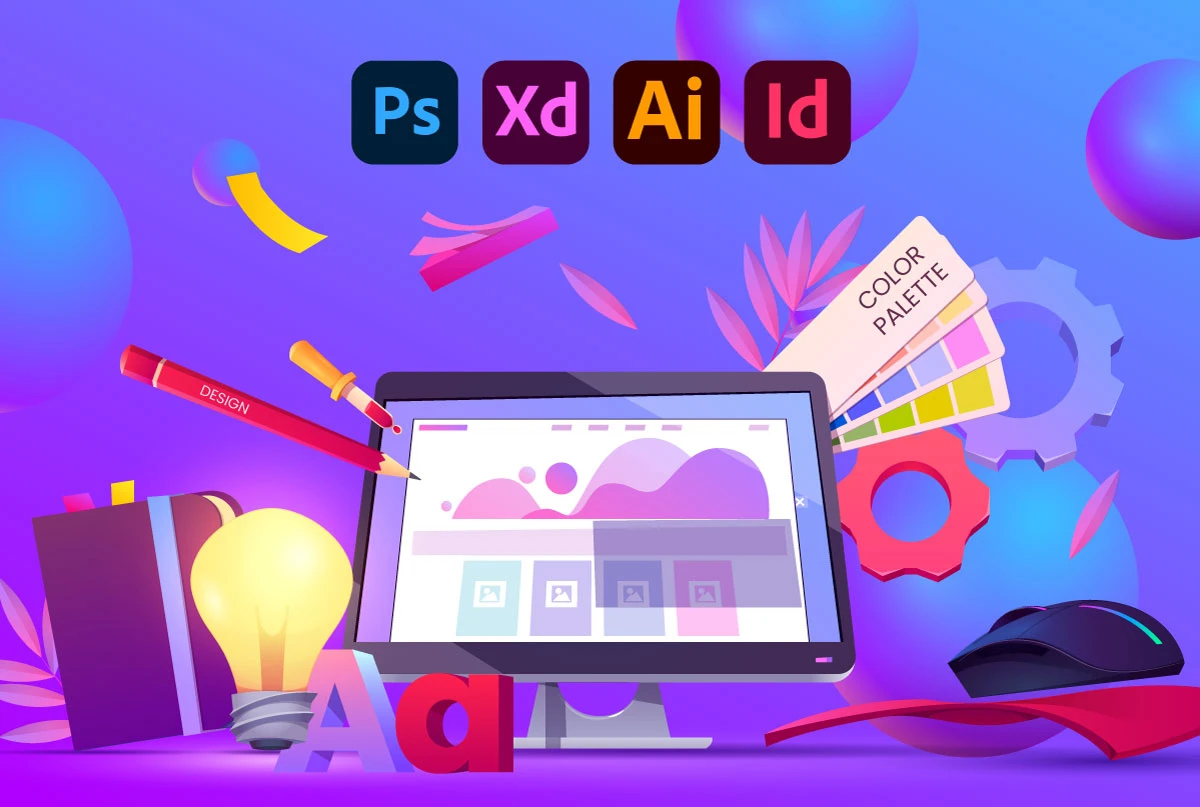Before delving into the specifics of graphic design courses, understanding the fundamentals is crucial. Design principles such as balance, contrast, and hierarchy form the backbone of effective visual communication. A solid grasp of these basics sets the stage for a successful graphic design journey.
Introduction to Design Software
Equipping oneself with the right tools is essential in the graphic design realm. Courses often provide an introduction to popular design software like Adobe Creative Suite, empowering learners to translate their creative visions into tangible designs.
Benefits of Enrolling in Graphic Design Courses
Structured Learning Environment
One of the primary advantages of graphic design courses is the structured learning environment they offer. These courses are meticulously designed to cover a spectrum of topics, providing a systematic approach to learning design principles, software proficiency, and real-world applications.
Industry-Relevant Skills Acquisition
Enrolling in a graphic design course ensures the acquisition of skills directly applicable in the industry. From conceptualizing designs to navigating complex design software, these courses bridge the gap between theoretical knowledge and practical, marketable skills.
Choosing the Right Graphic Design Course
Researching Course Content
Not all graphic design courses are created equal. Before committing to a program, aspiring designers should meticulously research the course content. Look for courses that cover a broad range of topics, ensuring a comprehensive education.
Checking Accreditation and Reviews
Accreditation adds credibility to a graphic design course. Prospective students should verify whether a course is accredited and explore reviews from past participants. These steps help in assessing the effectiveness and reputation of the course.
Online vs. Offline Learning
Flexibility of Online Courses
Online graphic design courses provide flexibility, allowing learners to pace their education according to their schedules. This mode of learning is particularly advantageous for individuals with busy commitments or those unable to attend traditional classes.
Benefits of Traditional Classroom Learning
On the other hand, traditional classroom learning offers a structured environment with face-to-face interactions. The immediacy of feedback from instructors and the sense of community can enhance the learning experience for some individuals.

Mastering Design Software
Adobe Creative Suite and Other Essential Tools

Building a Strong Portfolio

Proficiency in design software is non-negotiable for a graphic designer. Courses often focus on mastering tools like Photoshop, Illustrator, and InDesign within the Adobe Creative Suite, along with other essential tools that broaden a designer’s skill set.
Practical Application in Projects
Beyond theoretical knowledge, graphic design courses emphasize practical application. Learners often engage in projects that mirror real-world scenarios, allowing them to apply their skills and build a robust portfolio.
Real-World Applications
Case Studies of Successful Graphic Designers
Exploring the success stories of established graphic designers provides insights into real-world applications of design principles. Courses may present case studies that showcase how designers have navigated challenges and achieved success in diverse industries.
Applying Skills Across Various Industries
Graphic design is versatile, finding applications in fields ranging from marketing and advertising to web design and branding. Courses highlight the adaptability of design skills, encouraging learners to explore and apply their creativity across various sectors.
Showcase Diverse Projects
A strong portfolio is the hallmark of a skilled graphic designer. Courses guide learners in curating portfolios that showcase a diverse range of projects, demonstrating versatility and competence to potential clients or employers.
Importance in Job Hunting
Whether freelancing or seeking employment, a compelling portfolio can make a significant difference. Employers often evaluate portfolios to assess a designer’s capabilities, making them a critical component in the job application process.
Networking Opportunities
Joining Design Communities
Networking is a valuable aspect of a designer’s journey. Graphic design courses often provide opportunities to connect with peers, creating a supportive community. Networking can lead to collaborations, providing exposure to different perspectives and skill sets.
Collaborating with Peers
Collaboration is integral to many design projects. Graphic design courses encourage collaboration among learners, fostering teamwork and communication skills that are essential in the professional world.
Staying Updated with Trends
Continuous Learning in Design
Graphic design is a dynamic field with trends that evolve rapidly. Courses instill a mindset of continuous learning, preparing designers to adapt to new trends and technologies throughout their careers.
Adapting to Industry Changes
As technology and design trends evolve, staying current is paramount. Graphic design courses not only teach current practices but also instill the ability to adapt to industry changes, ensuring that designers remain relevant in the ever-evolving landscape.
Challenges in Graphic Design
Overcoming Creative Blocks
Creative blocks are common in the design process. Courses provide strategies for overcoming these challenges, offering techniques to reignite creativity and find inspiration, even in the face of seemingly insurmountable obstacles.
Managing Client Expectations
Effectively managing client expectations is a crucial skill. Graphic design courses may include insights on understanding client needs, communicating effectively, and navigating the sometimes complex client-designer relationship.
